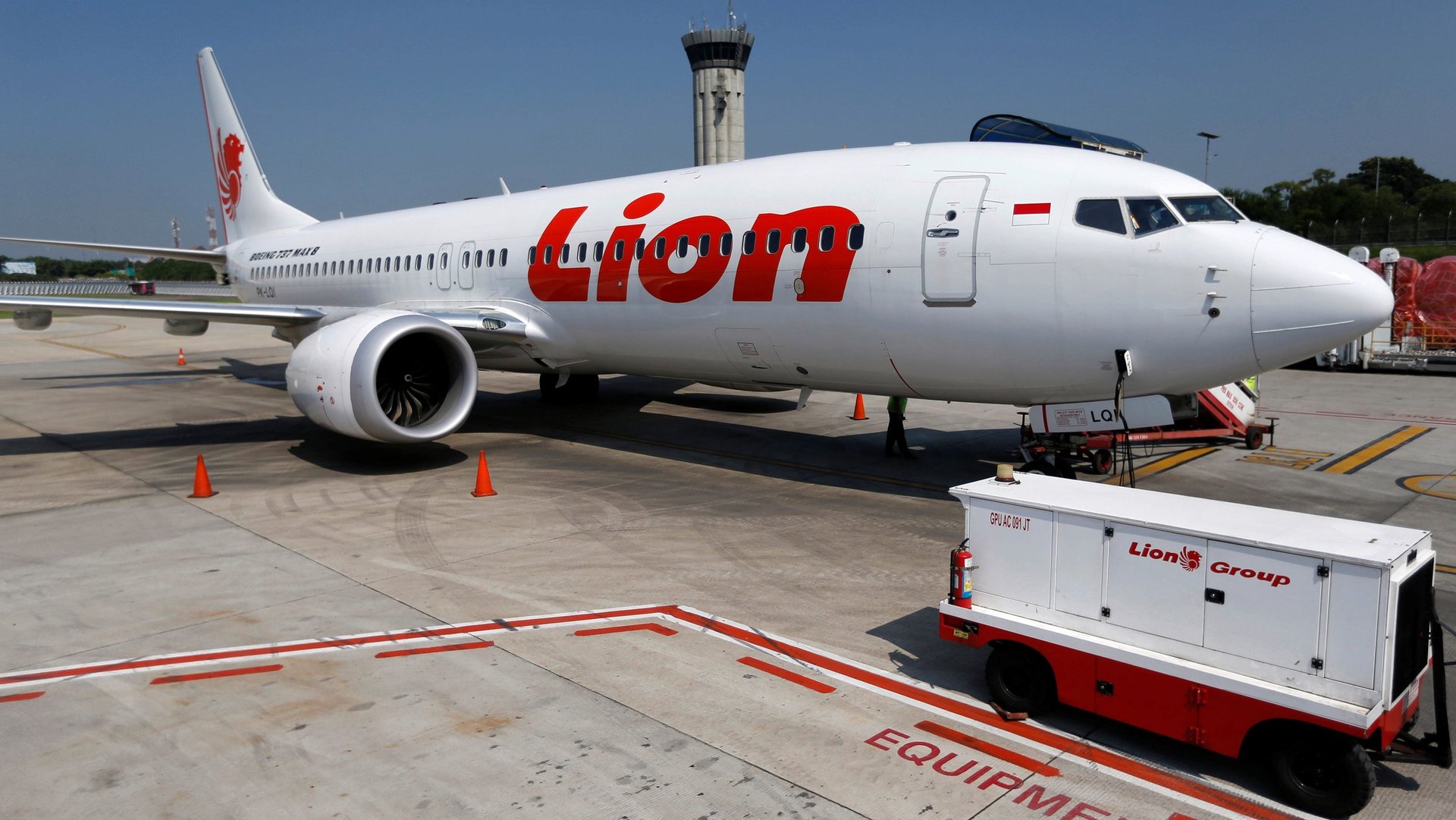An off-duty pilot saved Lion Air’s 737 Max from a crash the day before its fatal flight
When a Lion Air flight crashed in Indonesia on Oct. 29 killing 189 people, it was the first accident for Boeing’s new 737 Max jet, and it drew investigator attention to a little-known new flight-control function.


When a Lion Air flight crashed in Indonesia on Oct. 29 killing 189 people, it was the first accident for Boeing’s new 737 Max jet, and it drew investigator attention to a little-known new flight-control function.
Known as the Maneuvering Characteristics Augmentation System, or MCAS, the system directs the plane’s nose downward in response to sensor data that shows the plane is in danger of a stall. The redirection happens without pilot intervention, and can be quite forceful. In the Lion Air case, it was triggered in response to erroneous sensor data indicating the plane’s nose was too high. Pilots say they didn’t learn of the system until after that crash.
A day earlier on Oct. 28, the same plane had experienced similar problems to those seen on the flight that crashed, but managed to resolve them and proceed with the flight safely. Bloomberg reported that’s because a third off-duty pilot (paywall) who was in the cockpit took the steps needed to stop the plane from engaging in repeated nose-down maneuvers—known in aviation as “runaway trim.” The third pilot’s presence wasn’t noted in Indonesia’s preliminary report on the crash of flight JT610, which attributed the corrective action to the commanding pilot on the Oct. 28 flight.
On its penultimate flight, the plane began automatically adjusting the nose downward less than six minutes into the flight—soon after a cockpit alert activated at 400 feet to indicate an impending stall. The flight system carried out three maneuvers to adjust the nose downward, flight data showed, but the crew initiated steps to override it a little over eight minutes into the flight. The flight landed safely in Jakarta about an hour and a half after takeoff. When the pilots logged the flight later, along with several instrument failures, they noted they had faced “[speed trim] also running to the wrong direction, suspected because of speed difference.”
On the flight the next morning, pilots on JT610 battling the plane were hunting through a quick-reference handbook until the plane hit the water, according to a Reuters report on the contents of the cockpit voice recorder, citing unnamed sources. A spokesman for Indonesia’s National Transportation Safety Committee said the contents of the CVR aren’t yet public, when reached for comment on the Reuters report. The 737 Max operations manual didn’t include mention of the MCAS system at the time.
The cockpit voice recorder for the Oct. 29 flight was only recovered in January, and has been expected to shed more light on the procedures tried by its 31-year-old Indian commanding pilot, who had more than 6,000 hours of flying experience, and second-in-command, a 41-year-old Indonesian national with over 5,000 hours of flying experience.
Sources told Reuters that the commanding pilot asked the first officer to check a handbook with checklists for procedures for abnormal events. The two pilots discussed airspeed and altitude issues, but didn’t appear to realize they were experiencing runaway trim, according to the Reuters report. Towards the end of the flight the captain asked the first officer to take over flying while he searched the handbook. The preliminary report showed the first officer countered the automated nose-down action more weakly than the captain.
A week after the crash, the FAA directed airlines to update manuals (pdf) for the 737 Max to direct pilots to the procedure to be used in the situation faced by the Lion Air flight, and inform that the Max 8 and 9 planes had a flight control system that could adjust the nose of the plane downwards in increments of 10 seconds at a time.
In its response to Indonesia’s preliminary report in November, Boeing made a point of comparing the response of the pilots on the doomed flight, with that of the pilots the day before. The statement angered the airline (paywall) for appearing to highlight the role of human error, as well as maintenance, over the role of the new flight system. A final report is due in July or August.
In the wake of the Ethiopian Airlines crash that killed 157 people on March 10, which was also a 737 Max jet, the plane has been globally grounded. Ethiopian and US authorities have said there are similarities to the Lion Air crash, citing black-box data, physical evidence from the scene, and satellite data. Since then, the design of the anti-stall system, how robustly it was safety tested, and how pilots were prepped for the Max have been under fierce scrutiny.
Pilots say they should not have been kept in the dark, particularly when the anti-stall system relies on pilot action as a crucial safety backstop.
“There’s not a pilot in the world that could look up what the system was about because it wasn’t in the book,” said captain Dennis Tajer, spokesman for the Allied Pilots Association, the union for American Airlines pilots, in a recent interview, referring to the Max flight operations manuals in use prior to the Lion Air crash.
Some pilots, such as those of United Airlines, have said a properly trained pilot should be able to diagnose the problem and resolve it even without knowing about MCAS. That seems to be what happened on Oct. 28, the Lion Air jet’s penultimate flight.
But many pilots say that being aware of the presence of MCAS, and of how it might make the plane behave, makes diagnosing and resolving a problem likely to happen more quickly in a situation that can be confusing, where every second is crucial.
Update: This story was updated on the day of publication with additional details from a Reuters report on the contents of the cockpit voice recorders from Lion Air Flight JT610.